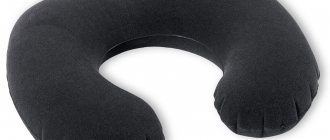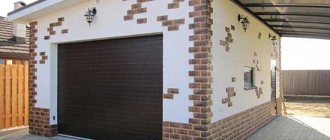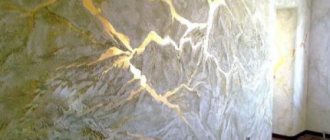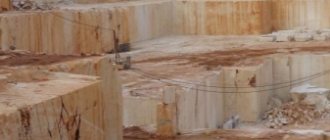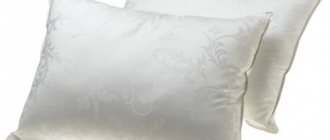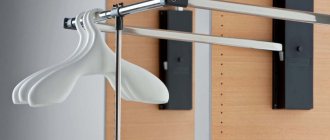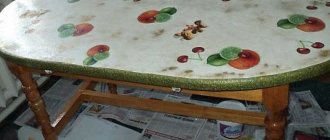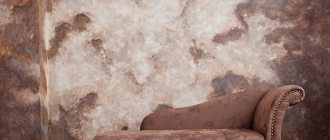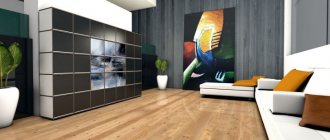When thinking about choosing an inexpensive but durable finishing decorative coating that can withstand temperature fluctuations well and is easy to maintain, pay attention to mosaic plaster.
In appearance, the wall on which this coating is applied resembles a surface made of granite, marble or other expensive stone.
On sale, this material can most often be seen in the form of a thick solution, reminiscent of sour cream in consistency and does not require the addition of water or dilution with other substances.
There are even more options on this website https://justinterior.ru/
Most often, dry mixtures are used in the process of restoration work to obtain a high-quality imitation of stone with a complex pattern. For routine repairs, as a rule, ready-made solutions are chosen.
Types of plaster: variety and purpose
Mosaic decorative mass, depending on the quality composition, as well as the nuances of use, is divided into several types:
- acrylic composition for covering the base of a building. The fine-grained base is visually close to a mosaic; it adheres well to traditional gypsum and cement plasters; such mosaics are coated with acrylic varnish for stability;
- facade plaster includes larger fractions and is applied in a thick layer, so small defects - cracks, unevenness - do not need to be leveled with additional mortar. The application technique speeds up the finishing work: the next layer of material is applied to the still wet previous one;
- fancy mosaic marble mixture designed for interior decoration. Here it is acceptable to use crumbs with different dispersion; there are no restrictions in the selection of shades.
The technologies used to make modern plaster imply the presence of granite, quartz, marble chips, plasticizers and other additives. Fine- and fine-grained options are suitable for interior finishing, while solutions with coarse inclusions are best chosen for exterior work.
Mosaic plaster: composition, types, areas of application
The mosaic finishing mixture consists of selected colored fine marble, quartz and granite chips. It is made on an acrylic base with the addition of adhesive components that ensure plasticity, homogeneity of the mass, and high-quality adhesion to the surface.
Material properties
The mosaic covering is characterized by:
- resistance to atmospheric conditions and pollution;
- impact resistance;
- possibility of application manually and by machine;
- extensive color scheme, use of color combinations;
- the ability to adjust the structure of the coating by choosing the stone fraction;
- environmental friendliness and durability;
- ease of application, requiring no qualifications.
Plaster based on natural stone in the interior looks solid and monumental
Types of plaster
There are several types of mosaic covering:
- acrylic mosaic plaster for plinth. It is designed to protect and decorate the lower part of the building facade;
Note: the basement mosaic consists of grain stones 0.8-3 mm in size and can be applied to a cement, lime, gypsum and mineral base.
Finishing the base with mosaic plaster - aesthetically pleasing, easy and practical
- mosaic facade plaster. This is a coarse-grained crumb of different colors, intended for finishing large façade surfaces;
Please note: the coating is applied using a metal float using the “wet on wet” method - the second layer is applied without waiting for the first to dry.
Finishing the facade with mosaic plaster is an easy way to give your home an original look.
- mosaic marble plaster for interior work - decoration of niches, arches, columns. For these purposes, multi-dispersion material of a wide range of colors is used.
Tip: due to the use of stone, Mosaic decorative plaster is a “cold” coating, so it is preferable to use it in non-residential premises - in the corridor, bathroom, on the veranda.
Mosaic plaster is easy to maintain and can be washed and cleaned
Scope of application
Due to the presence of natural stone in the mixture, the mosaic coating tolerates temperature changes and high humidity well, which allows it to be used for exterior work (cladding the facade walls of a house). It could be a country mansion, an office building, a restaurant or a cafe.
A wide selection of colors allows you to maintain the finishing of the facade in a corporate style and distinguish it from similar buildings
Mosaic plaster is an indispensable universal coating for decorating a hallway, bathroom, kitchen, balcony/loggia. Due to its increased wear resistance and resistance to stains, the finish is often used in areas of high use - on staircases, in public corridors, in the halls of apartment buildings.
Decorative mosaic plaster is not afraid of mechanical damage and animal claws, photo
The protective and decorative properties of mosaic plaster, along with its low cost, make it possible to use it in public and office spaces. Various coating colors and the geometry of their combinations will allow you to decorate and make any interior more expressive.
Note: the material is sold ready-made, it is easy to apply, even non-professionals can handle it.
Mosaic coating can be used on different surfaces
Advantages of the original finishing material
Mosaic has always been loved by landscape designers and stylists. Its varieties decorate the facades of houses, gazebos in private areas, and add a special charm to the premises. This coating has undoubted advantages:
- polymers, without which modern plaster cannot be produced, guarantee the composition’s resistance to negative external influences: the walls are not afraid of increased dampness or contact with aggressive substances;
- plasticizers make it convenient to apply the substance to walls;
- The versatility of the coating was highly appreciated: it is suitable for decorating surfaces made of various base materials - brick, cement, plasterboard or other basic components;
- a huge selection of shades, the possibility of their combination will allow you to create original compositions. Mosaic finishing is in trend, because in this way it is easy to create real masterpieces;
- The environmental friendliness of the composition and its resistance to wet cleaning are important for lovers of comfort and safety.
Plaster with hard rocky inclusions has protective as well as decorative properties. The affordable price allows you to decorate any interior with fancy patterns or clear geometric shapes if desired.
What tools are needed?
Of course, applying mosaic plaster to the walls will be problematic if you do not buy the appropriate tools in advance:
- Spatula - We use this to apply plaster, so it must be made of appropriate materials. It is better to choose stainless steel products;
- Mixing unit - It must be equipped with a mixer because it uses it to mix the gypsum mass. Of course, we can also use wooden elements for this purpose, but they will not be as effective as a drill;
- Protective film - when applying plaster indoors;
- Ladder;
- Protective work clothing - don't risk staining your everyday clothes. Once the stains dry, they will be unsuitable for exterior repairs.
When it comes to the methods of applying plaster, they cannot be divided into categories. This is because we spread the mosaic plaster manually without using various devices. Because applying this type of plaster is extremely easy.
Jigsaw or jigsaw. What is better to choose for renovating a dacha?
Thermal conductivity of materials. How do they think? comparison table
Is it worth purchasing country real estate during a crisis?
Cable entry. What it is? How to choose?
What new products and technologies can improve comfort in your home?
How to transfer agricultural land to the individual housing construction category? Translation cost
Kaluzhskoe Highway: a place of attraction for new residential complexes
The best places to build a house along Ostashkovskoye Highway
Strip or slab foundation. Which is better?
Laminate and laminate flooring. What are its pros and cons?
Surface preparation and nuances of mosaic application
The mosaic variation of plaster has become in demand due to its simple and quick installation method. The most popular are ready-made types with acrylic resin, supplemented with any stone chips. Natural crushed options and colored with available mineral dyes can be used as filler. Application of the composition implies the same procedure that is suitable for any mixture intended for leveling floors, partitions or decorating them.
Traditionally, like any other coating, the walls are leveled and primed. The plastic mass is comparable in thickness to cake dough. Before starting work, such a composition should be mixed and made sure that the color is uniform. The mosaic mixture is applied to the surface using a trowel and a trapezoidal trowel. Experts note that about 3 kg of composition will be needed to treat 1 m2.
If you are planning a strict interior with a uniform coating, then the plaster is applied in a thin but dense layer. The working plane must be filled from corner to corner; it is worth making sure that no joint strips remain. For complex combinations or to create fancy geometric patterns, marking the wall is necessary - this is done using simple pencils. It is wiser to seal the joints with nearby areas with masking tape. First, apply the base coat or fill the central part of the pattern. Allow the mixture to dry, and after 15-20 minutes remove the strips of tape and continue working.
Decorative finishing with an imitation mosaic pattern can become the starting point of any interior design and decorate the facade of the house. There are many ready-made mixtures, but many craftsmen prefer to prepare such compositions themselves. The technology of layer-by-layer application is elementary and does not require special skills.
Technology and conditions of application to the façade and plinth
When carrying out repairs yourself, it is better to use ready-made mixtures from cans. When using dry material, it is diluted with water according to the instructions and brought to a homogeneous consistency using a construction mixer.
Mosaic plaster is applied with a stainless trowel, from one corner to another. The work must be carried out quickly, since if the applied mixture dries out, the joints between the sections will be visible to the naked eye. For even application, press the tool tightly against the wall and rub the mixture in a smooth motion.
“The thickness of the layer depends on the size of the crumb.”
Durability is the main advantage
Basement is the base of a building that rests on a foundation. In strip foundations, the base is the upper part of the foundation itself. Also, the plinth is the lower belt of the facade. The presence of a belt protects the building from environmental influences and pollution. To achieve the best result, you need to choose the right material for processing the base. Treating the base part of the foundation not only provides protective properties, but also gives the walls of the house an irresistible appearance. The choice of material for finishing the base is the best solution.
Related article: DIY glass painting with acrylic paints
Colored mosaic plaster
A durable layer of the mixture is applied to the base, while one rule is followed: the outer walls must be dry. This rule is due to the dense consistency of the mixture, through which water slowly evaporates. If this rule is violated, mold will form on the walls. Properly preparing the outside of the house for plastering is the key to the durability of mosaic plaster. The mixture, applied in a small amount to the wall of the building, turns out smooth and neat. Before starting the process, it is recommended to apply a layer of primer to the facade. The preparation process will help strengthen the base and regulate its ability to absorb moisture. Then the surface is leveled. Correctly completed preparation steps and the plastering process itself will allow you to achieve maximum stability of the exterior walls of the house.


